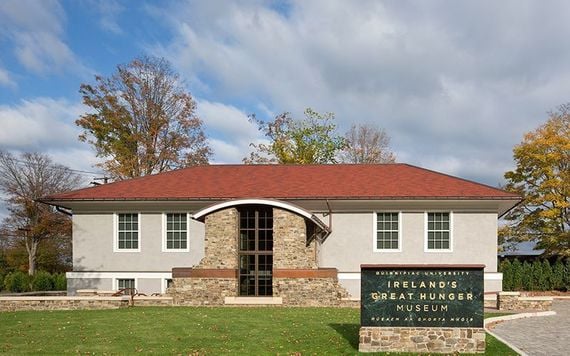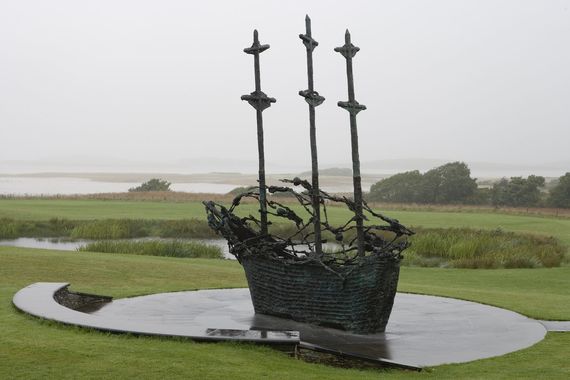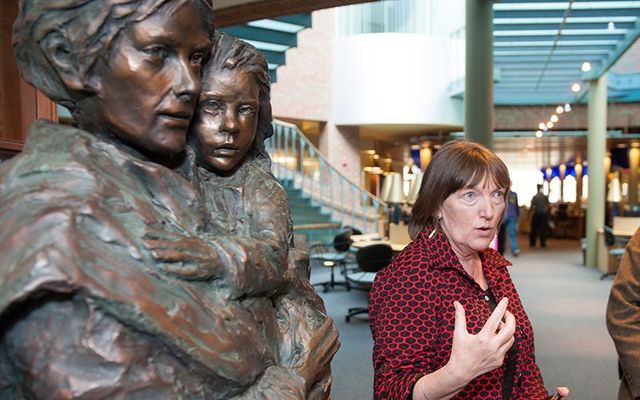Here it is again, official silence about the Great Hunger. Specifically in this case, silence about Ireland's Great Hunger Museum at Quinnipiac University in Connecticut.
After a furor in the press about the museum's sudden closure, the controversy has apparently subsided, as so many Irish controversies seem to, and the world has moved on.
But that silence does not necessarily suggest that nothing new is happening or that no one is interested, simply that none of it is happening in view of the public.
Curiously, the silence from the wider Irish American community and from so many of those wealthy Irish Americans who supported the museum from the start has endured - and there is a question to be asked there.
The silence from Quinnipiac itself is perhaps understandable too, as the new president Judy Olian has been accused of having a personal vendetta against the museum since the day she arrived, an accusation that some dispute.
Under the vision of former Quinnipiac president John Lahey, the museum was created to find a way to commemorate the tragic impact of the Great Hunger through the visual, a thing that has never been done anywhere in relation to any famine.
But some privately contend that Lahey did not allow a structure to be put in place that would have allowed the museum to continue beyond his own presidency.
A board was set up, but critics say it simply functioned as a management committee and they claim that there was almost no one external to the university on that board. No enduring structures were put in place, which meant that when Lahey's power waned, the museum was in trouble.

Ireland’s Great Hunger Museum, Músaem An Ghorta Mhóir, at Quinnipiac University in Connecticut.
Although the publications and touring exhibitions created by Ireland's Great Hunger Museum were all hugely successful, to take on a subject as potent as the famine in Ireland without a long-term commitment to the administration and successful funding of the museum seems remarkable, critics say.
Recall what the museum's work can actually do: it can help the Irish to understand a key moment in their history and inheritance, and it can help the offspring of immigrants understand the great journey their ancestors made.

Whether you grew up in Ireland in a landscape still scarred by the abandoned ruins of that time, or in America, where the link to the motherland is increasingly tenuous or broken, that work profoundly matters.
There has been some suggestion that Quinnipiac is privately in discussion with other universities and institutions to distribute the museum's famine-related collection, but so far, no indication what those institutions and colleges are. Is it Boston, Princeton, NYU, or somewhere else? Is the Irish government involved in these discussions?
It's extraordinary that so much effort was placed into the building of this museum for it all to be suddenly cast aside, critics say. It's also curious that no clear savior of the collection and its work has yet emerged. There's no one who's publicly expressed an interest, even.
Is Quinnipiac hoping that the media glare will soften and they can begin to sell off the museum's lucrative collection? Or is the issue in hand behind the scenes? What about the employees that found themselves unceremoniously out of a job?
Supporters say that an effort should be made to keep the museum's unique collection together, since it's groundbreaking and does so much to illuminate different aspects of the famine and of the cultural, religious, economic, and social life in Ireland in the 19th century.
A strong effort should be made to continue the publications the museum produced too since they were so unusual, being more than just another series of books of the famine, but instead interdisciplinary examinations offering very wide-ranging studies of the calamity and its effects.
Perhaps right now, supporters hope, some wealthy Irish Americans are trying hard to put a rescue package together and come out with a great big, happy announcement.
Perhaps we may yet be pleasantly surprised. But the continuing silence is worrying.




Comments